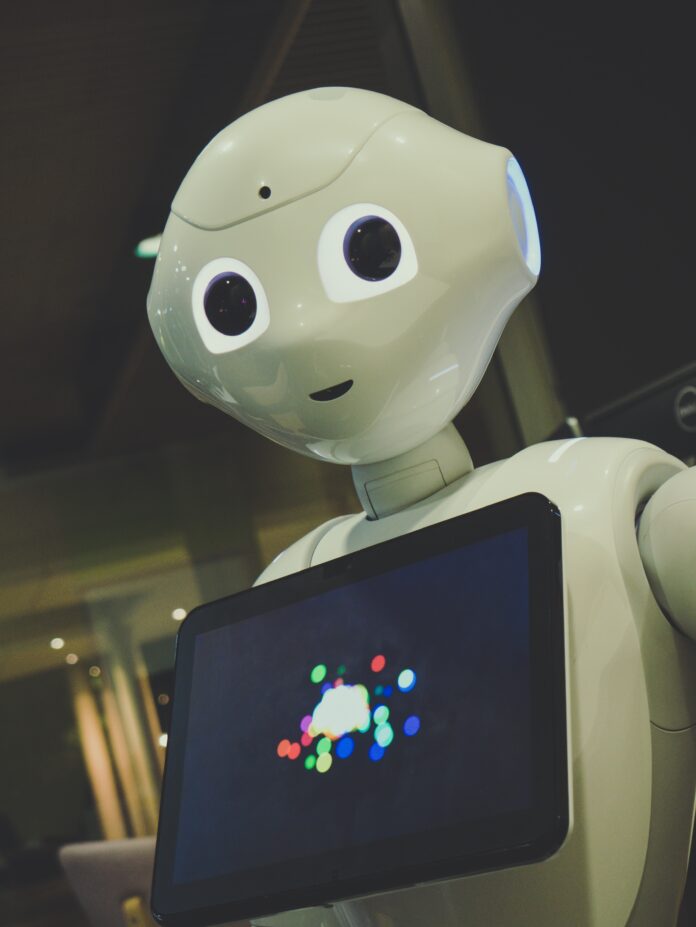Joe Rogan is a renowned comedian, actor, and podcast host known for his engaging interviews with a diverse range of guests on “The Joe Rogan Experience” podcast. Over the years, Rogan’s podcast has gained a massive following, and his conversational style has made him a popular figure in the entertainment industry. As technology has advanced, an artificial intelligence (AI) model inspired by Joe Rogan has emerged, aiming to replicate his unique interviewing style and engage with users in a virtual setting. This AI model, which we’ll call “RoganBot,” has evolved from a simple chatbot into a sophisticated virtual co-host, providing an immersive experience for podcast listeners and pushing the boundaries of what is possible with AI.
The early days of RoganBot saw it as a basic chatbot that could respond to pre-programmed questions and prompts with scripted answers. It was a rudimentary form of AI, limited in its ability to hold meaningful conversations and lacking the dynamic nature of Rogan’s real-life interactions. However, as technology progressed and natural language processing capabilities improved, RoganBot quickly evolved.
One of the key advancements in RoganBot’s development was the integration of machine learning algorithms. By leveraging large datasets of Joe Rogan’s interviews and conversations, RoganBot was able to learn from Rogan’s speech patterns, mannerisms, and interviewing techniques. This allowed RoganBot to generate responses that closely resembled Rogan’s authentic style, making interactions with the AI model more engaging and realistic.
As RoganBot continued to learn and adapt, it began to incorporate real-time data into its responses. For example, it could analyze the user’s input, detect the sentiment of their words, and adjust its responses accordingly. This enabled RoganBot to provide more nuanced and personalized interactions, just like Rogan would do in a live interview.
Another significant breakthrough in RoganBot’s evolution was the integration of voice recognition technology. Users could now engage with RoganBot using their voice, mimicking the experience of having a real conversation with Joe Rogan. The AI model could analyze the user’s tone, pitch, and volume to better understand their emotions and deliver responses that matched the user’s cues. This made interactions with RoganBot even more immersive and realistic, blurring the lines between human and AI interaction.
As RoganBot’s capabilities expanded, it started to incorporate other multimedia elements into its interactions. For example, it could generate virtual avatars that resembled Joe Rogan, which users could interact with in a virtual environment. These avatars could mimic Rogan’s gestures, facial expressions, and body language, adding another layer of realism to the experience. RoganBot could also display visual aids, such as images and videos, to enhance its responses and provide more context to the conversation.
The advancements in RoganBot’s capabilities were not limited to just mimicking Joe Rogan’s interviewing style. The AI model also developed its own unique features and functionalities that set it apart. For instance, RoganBot could analyze data in real-time, such as trending topics or news articles, and incorporate that information into its responses. It could also provide fact-checking and citation of sources to ensure the accuracy of its statements, making it a reliable source of information.
RoganBot also had the ability to learn from user interactions. It could analyze feedback from users, track engagement patterns, and adapt its responses accordingly. For example, if users preferred a more casual tone or specific topics, RoganBot could adjust its conversational style and content to match those preferences. This made interactions with the AI model more personalized and tailored to individual users’ interests, further enhancing the user experience.
The impact of RoganBot extended beyond the realm of entertainment. It found applications in various industries, including education, journalism, and even therapy. In education, RoganBot was utilized as a virtual instructor, providing lectures, explanations, and interactive discussions with students. In journalism, it could conduct interviews and generate news reports based on real-time data and analysis. In therapy, RoganBot was used as a virtual counselor, offering empathetic responses and guidance to users who sought emotional support.
The ethical implications of RoganBot’s development were also a topic of discussion. Some raised concerns about the potential for AI to replicate human personalities without their consent, leading to issues of privacy and identity. Others debated the ethical implications of using AI to generate content, such as interviews or news reports, without disclosing that it was an AI-powered system. Nevertheless, the developers of RoganBot emphasized that the AI model was designed to complement and enhance human interactions, rather than replacing them.
Despite the challenges and debates, RoganBot continued to evolve and improve. It became a popular tool for podcast listeners who wanted to experience a virtual interview with Joe Rogan or engage in simulated conversations with the AI model. The immersive and interactive nature of RoganBot’s interactions made it a unique and engaging experience for users who were fans of Joe Rogan’s podcast.
Looking towards the future, the potential for RoganBot and similar AI models is vast. As technology continues to advance, we can expect even more realistic and sophisticated virtual co-hosts and conversational AI systems. These AI models could revolutionize the entertainment industry, creating new ways for users to engage with their favorite celebrities, fictional characters, or historical figures. They could also have applications in various fields, such as education, customer service, and healthcare, providing personalized and dynamic interactions with users.
In conclusion, RoganBot represents the evolution of AI from a simple chatbot to a sophisticated virtual co-host, inspired by Joe Rogan’s interviewing style. Through the integration of machine learning, voice recognition, multimedia elements, and real-time data analysis, RoganBot has pushed the boundaries of what is possible with AI in generating realistic and engaging interactions. While ethical concerns and challenges persist, RoganBot’s development opens up new possibilities for virtual interactions, with potential applications in various industries. As technology continues to advance, we can expect to see further advancements in the field of conversational AI, shaping the future of human-AI interactions.














